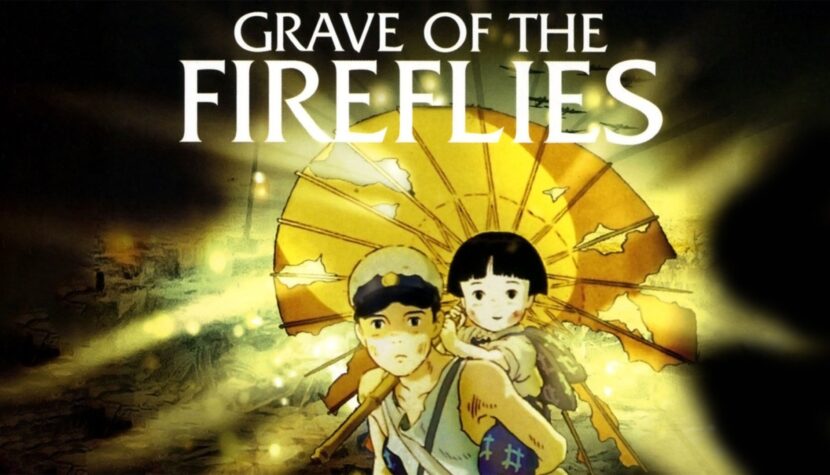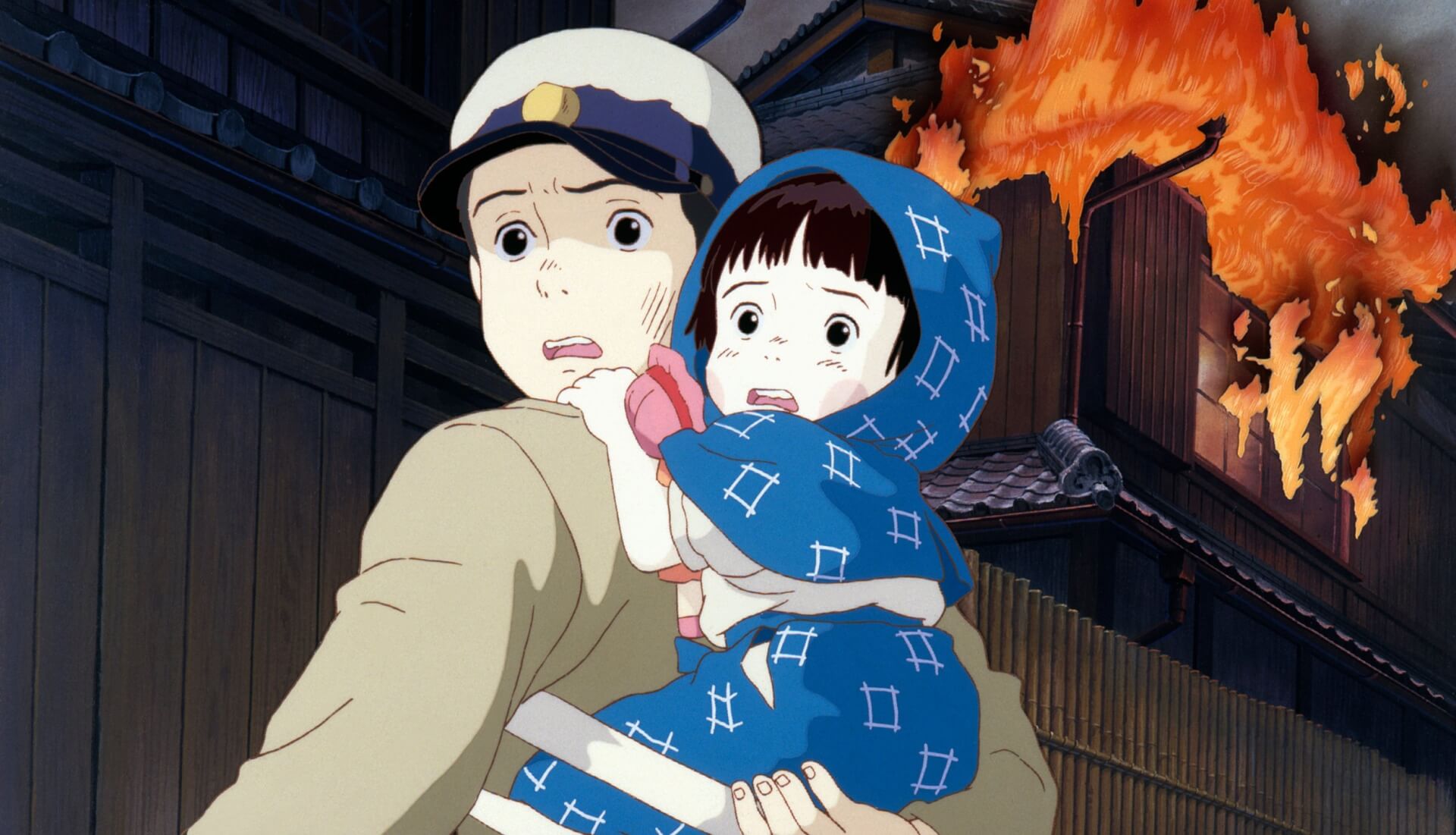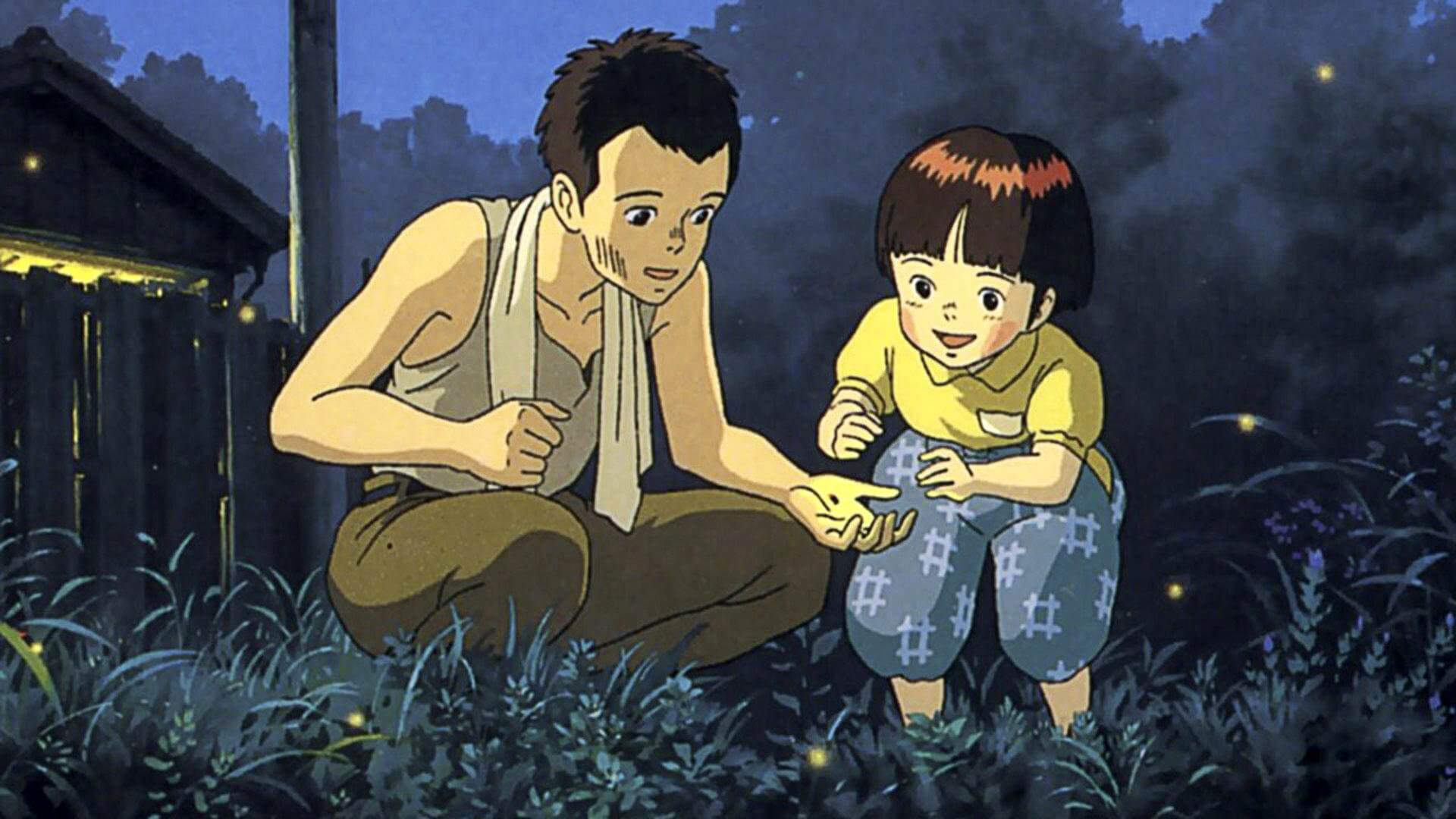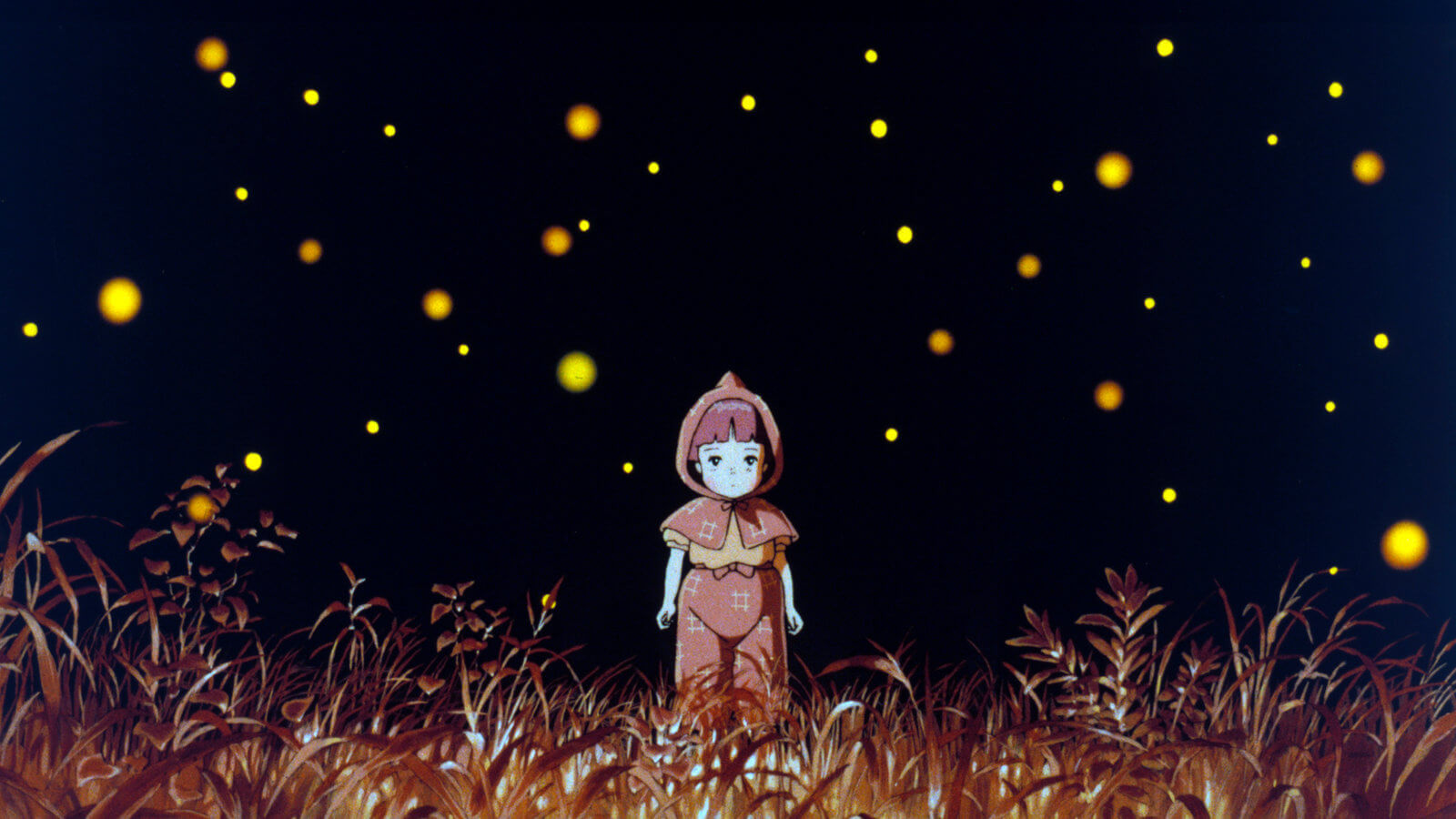GRAVE OF THE FIREFLIES. Wartime fairy tale anime masterpiece

At the end of World War II, the Americans conducted intense carpet bombings on Japanese cities. These were not attacks on military units but on areas where defenseless civilians lived. Without a doubt, this was one of the cruelest events of this global armed conflict. Fire consumed everything. There was not enough space in shelters. Some did not have time to escape. Just like the mother of a few-year-old Setsuko and fourteen-year-old Seita. Japanese buildings, still constructed with wood at the time, instantly turned into deadly traps. In the flames, all possessions and their owners perished. Director Isao Takahata, right from the beginning, presents us with an almost apocalyptic vision of the world. A loud signal announcing another bombing raid reaches our ears, armed planes start flying overhead, and the mother instructs her two children to flee – she will join them later. However, we feel that this is a parting, the last exchange of glances, words, and embraces.
From that moment of Grave Of the Fireflies on, Setsuko and Seita have to fend for themselves. Supposedly, their father is still somewhere around – an officer in the wartime navy. However, they haven’t heard from him for a long time, the letters stopped coming, and all contact was lost. Most likely, their father perished in one of the battles in the Pacific. All they have left is his photograph: smiling and proudly dressed in his uniform. It’s still a chance for salvation, some hope to survive. Maybe their paths will cross by accident. All they can do is wait. So, they find their aunt’s house. She reluctantly takes them in because she already has her own family to feed, and there isn’t enough food for everyone. At this moment, Takahata uses a poignant detail in the narrative. During one of the meals, we closely observe how the aunt distributes portions to the orphaned siblings sitting at the table. Not everyone gets as much as they expected, the portions only partially satisfy their hunger. The aunt’s immediate family gets priority, and the others get scraps. It’s still better than nothing.

We begin to observe the whole situation from Seita’s perspective. The director extends this scene, raises the tension through intelligent editing, and plays on our emotions. Meanwhile, we impatiently await the boy’s protest. However, we receive nothing; he remains silent throughout. In the end, we must be content with his resigned gaze. Seita knows that at this moment, they cannot expect anything more and that he is responsible not only for his own life. This is one of the most poignant scenes in Grave of the Fireflies. It goes far beyond the situation in the fictional world. The creators ask us how we would have behaved then, not only placed in Seita’s position but primarily in the role of his aunt. Takahata emotionally blackmails us – her behavior is easy to logically justify and morally defend. War distorts all codes and rules, breaks laws. It deconstructs commonly accepted attitudes. It’s a time of sacrifices. Humanitarianism gives way to the art of survival. In wartime, it reigns supreme. The world becomes a place of equals and unequals.

Isao Takahata deliberately dispenses with a broader historical context in Grave of the Fireflies. It is an intimate story about the relationship between a sister and brother, which, during its course, transforms from playmates into caregivers, and even a father figure. The Western adversary is entirely objectified; we do not glimpse into American planes or get to know their pilots – they are impersonal machines wreaking destruction. The director does not delve into the causes of the war, seek culprits, or engage in historical polemics. Grave of the Fireflies is not a political morality play but a family tragedy set against the backdrop of war. Takahata only shows what Setsuko can see with her own eyes. This is entirely sufficient. At this level, Takahata exhausts this story, supplementing it with a few insightful observations and non-trivial metaphors.

The most haunting images that stick in memory are the ones where the bombs dropped by American planes transform into the fireflies that give the film its title. In his film, the director assigns various meanings to these insects. At the beginning, they introduce a subtle metaphysical dimension to the film; they are the yardstick by which Setsuko interprets the world – for her, they are fairies, beings from a dreamlike, ideal, but no longer existing reality. Later, the fireflies become a symbol of death. Among the ruins left behind in the city of Kobe lie the charred bodies of its residents. The insects are related to the recent tragic events; after all, they carry the fire that consumed the now non-existent world. They are like candles placed on graves. They encourage reflection and remind us of the spiritual presence of our ancestors. Finally, the fireflies become a symbol of hope and providence. Thanks to them, even in the darkest moments, smiles appear on the faces of the children; they lift their spirits and stop their tears.
Grave of the Fireflies is a film that spans many tones, bringing new emotions to the cinematic experience of war. Takahata’s film focuses on a small fragment of this global conflict but opens the door to a territory that has not been precisely explored before. This is mainly due to the chosen form of animation, which rarely tackles such traumatic events as its subject matter.

War cinema is dominated by live-action productions, characterized by an established and predictable style, to which the simplified and often associated with fairy tales color palette does not seem to fit. Isao Takahata breaks this rule and finds the perfect cinematic language that combines the necessary dramatic weight with a fairy tale aura. Sometimes it indeed borders on sentimentality, but it has a serious narrative justification. Grave of the Fireflies is a memory of one of the characters, a reflection on the past and bygone times. Such a perspective sharpens many of the emotions experienced by the character and moves the audience. However, Takahata consciously and skillfully uses this perspective, and there is no mercantile calculation in it.

